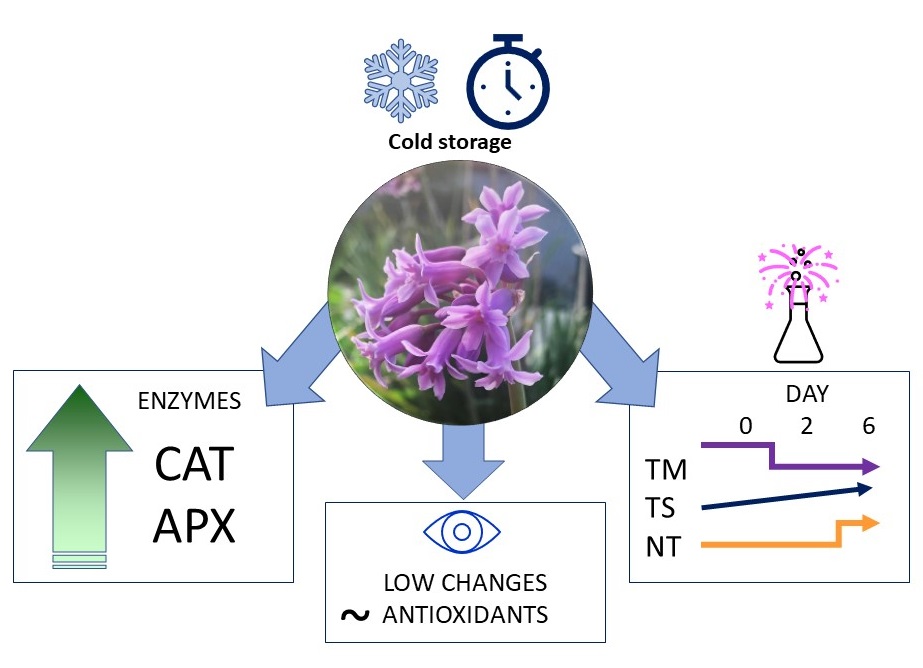Phytonutritional and aromatic profiles of Tulbaghia simmleri Beauv. edible flowers during cold storage

Published 2023-01-17
Keywords
- Antioxidant activity,
- enzyme activity,
- low temperature,
- postharvest,
- secondary metabolites
- sweet wild garlic,
- volatile organic compounds ...More
How to Cite
Copyright (c) 2023 Ilaria Marchioni, Basma Najar, Andrea Copetta, Benedetta Ferri, Barbara Ruffoni, Luisa Pistelli, Laura Pistelli

This work is licensed under a Creative Commons Attribution 4.0 International License.
Abstract
Edible flowers are appreciated due to their aesthetic features, nutritional value and antioxidant properties. Tulbaghia simmleri Beauv. (Amaryllidaceae family) flowers are characterized by a pleasant garlic taste and are consumed both as fresh and dried products. The aim of this work was to assess the effect of chilling temperature (+4°C) on the visual quality, nutritional content, and aroma profile of T. simmleri flowers after two (T2) and six (T6) days of storage. Colorimetric analysis highlighted a reduction in petal brightness at T6 and hence their darkening, due to a significant increase in a* coordinate and decrease in the b* one. Total polyphenols and flavonoids content remained unchanged until the end of the experiment, while total anthocyanins increased at T2. Flowers antioxidant activity (DPPH assay) decreased progressively during cold storage, while catalase (CAT) and ascorbate peroxidase (APX) activities increased. The aroma profile was analyzed by HS-SPME associated with GC-MS, underlining that fresh flowers were dominated by high content in monoterpenes (around 80%), with 1,8-cineol as main compound (53.1%). Cold storage reduced this class of volatiles while sesquiterpenes and non-terpenes increased; between them, benzyl benzoate reached 12%.




